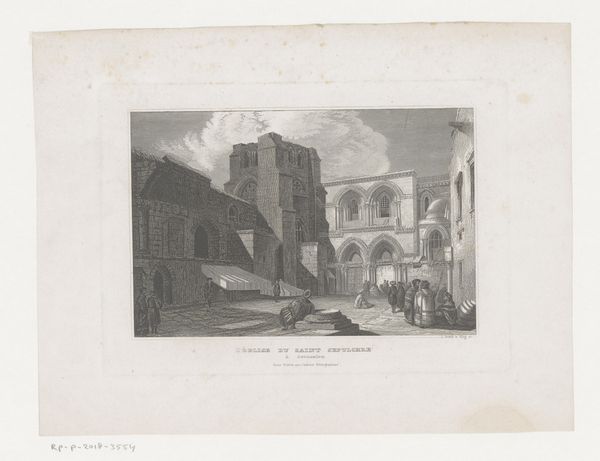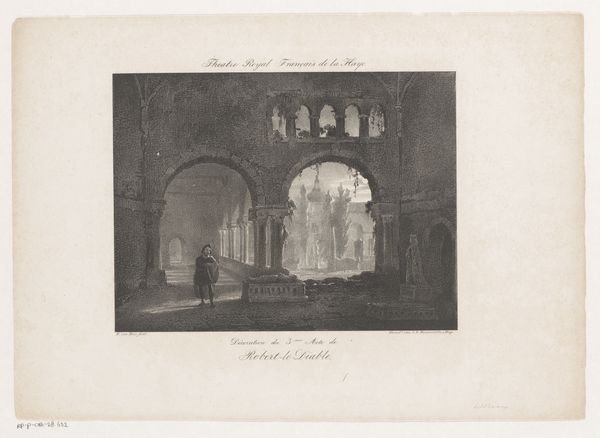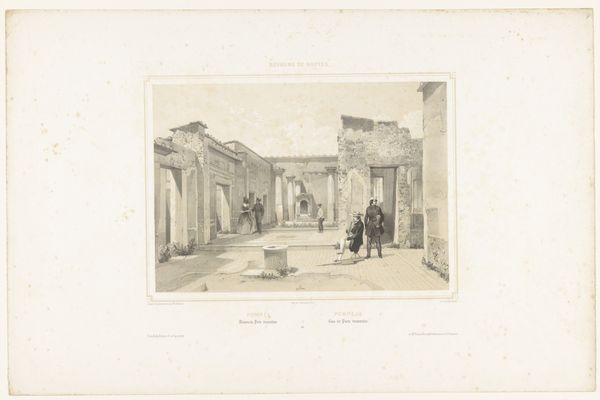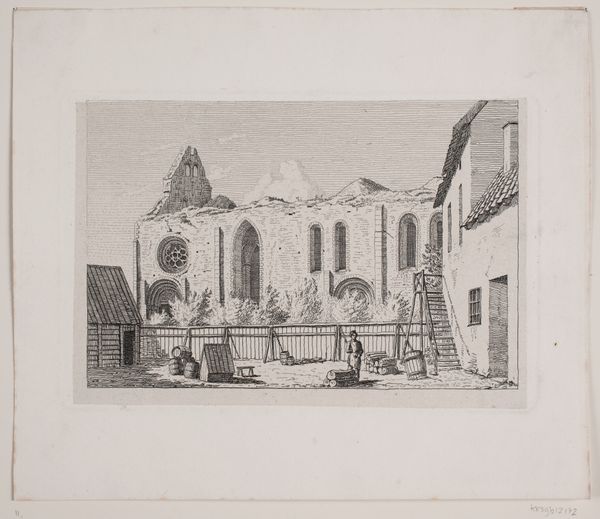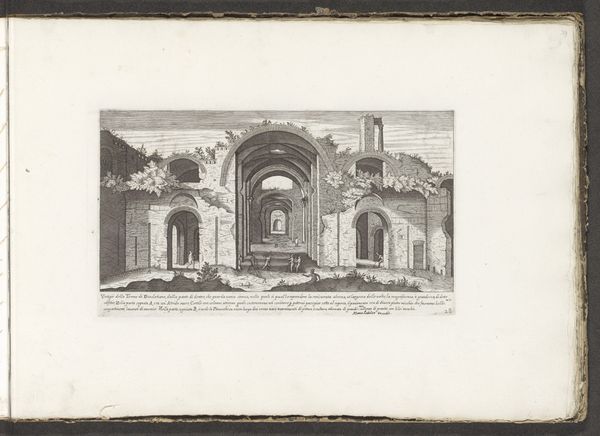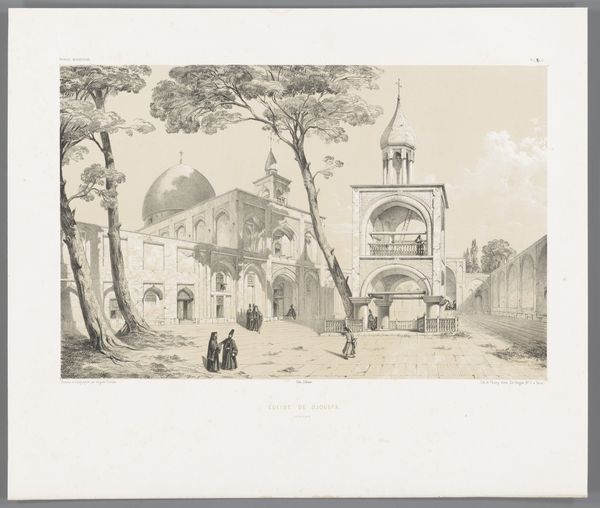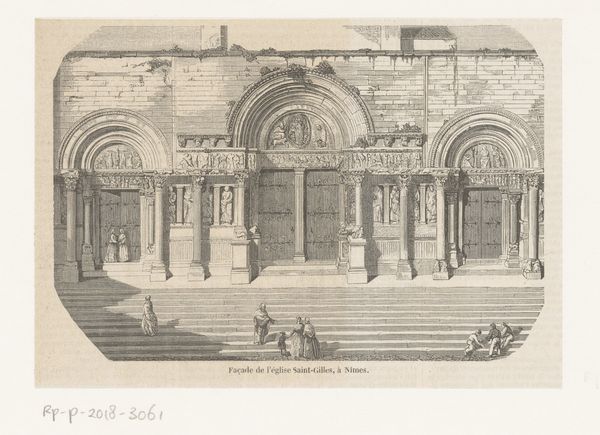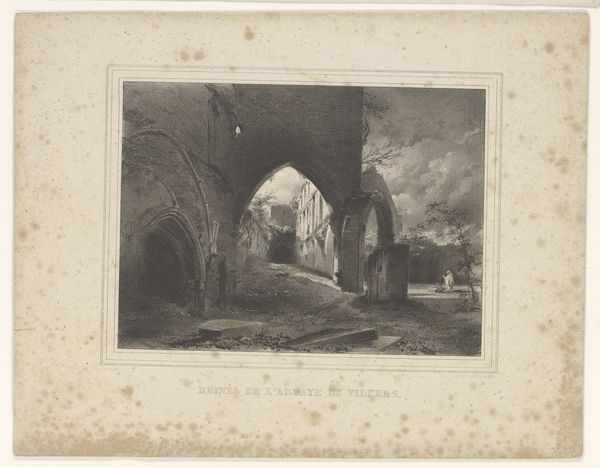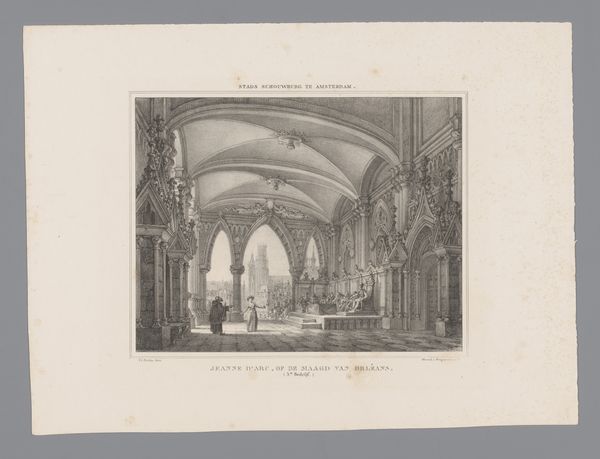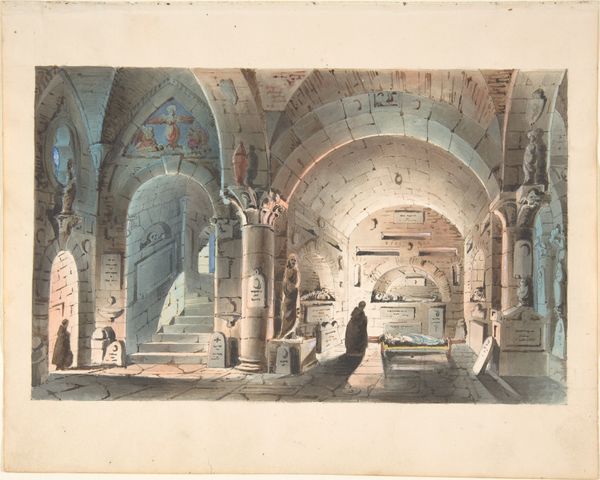
drawing, paper, ink, architecture
#
faded colour hue
#
drawing
#
aged paper
#
homemade paper
#
light colour palette
#
pale palette
#
muted colour palette
#
pale colours
#
light coloured
#
landscape
#
white palette
#
paper
#
ink
#
orientalism
#
soft colour palette
#
architecture
Dimensions: height 253 mm, width 416 mm
Copyright: Rijks Museum: Open Domain
Curator: Eugène Flandin’s "Kiosk van Fin Garden in Kashan," created between 1843 and 1854, gives us a glimpse into a Persian garden. The work is an ink drawing on paper, now residing here at the Rijksmuseum. Editor: What immediately strikes me is the tranquility. Despite the architectural subject, there’s an almost dreamlike quality, muted colors evoking a sense of timelessness and faded glory, wouldn’t you say? Curator: Absolutely. Flandin wasn’t just documenting; he was interpreting. Fin Garden, even today, is known for its serene beauty, a contrast to the arid landscape around it. It's been a symbol of royal leisure and power. I feel this image attempts to capture its atmosphere, its perceived “exotic” charm, catering to European tastes for the “Orient” at the time. Editor: Yes, but it feels like he wasn't merely confirming preconceived notions, you know? He uses this incredibly soft, almost hesitant line work. It's as though he’s respectfully observing a place, trying to understand it rather than dominate it with a rigid European perspective. It's not just about documenting a pretty garden, is it? Curator: It goes deeper. Flandin was part of a larger French diplomatic and scientific mission to Persia, a moment of intense curiosity from Europe. Art like this drawing informed public perception and even fueled political ambitions in that part of the world. It's interesting that he focuses on this architectural element, this Kiosk, a spot for royal gatherings or a place to escape the sun, isn’t it? Editor: Indeed. You can imagine the echoes of voices, the scent of the garden, of course the politics are infused here—Flandin makes these visible through the choice to portray it as serene. What stories these stones could tell. Curator: Well said. Flandin’s drawing, at first glance is beautiful and a quiet scene of a far away place. Editor: Though, viewed today, its whispers tell a story not only about a garden, but about us, its ever shifting reflection, the colonizers, the colonized and that strange play that never concludes, how very sad...
Comments
No comments
Be the first to comment and join the conversation on the ultimate creative platform.
